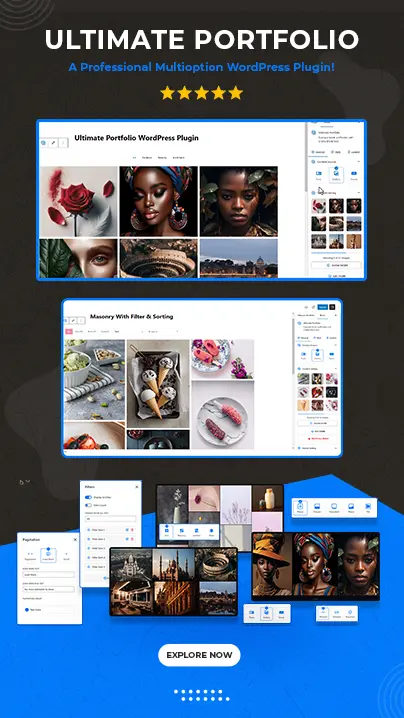
Search Engine Optimization (aka SEO) is already tough in the SaaS world. Your competition
isn’t just a few local businesses—it’s global giants, razor-sharp startups, and everyone in
between.
The problem? Many SaaS companies obsess over vanity metrics (like traffic and keyword
rankings) but overlook the critical ones that Enterprise SaaS SEO often uses to improve
marketing returns for software companies.
Table of Contents
So, what are these hidden gems? Let’s dive into the metrics you should be tracking but probably
aren’t.
Customer Journey Touchpoints: It’s Not Just About
Clicks
Most SaaS marketers laser-focus on conversion marketing, but what about the steps leading up
to them? If you don’t understand the journey your users take before signing up or buying, you’re
leaving money—and insights—on the table. Tracking the “in-between” moments of your
customer journey can reveal opportunities to improve your SEO strategy.
Key Metrics to Track
- Time-to-Conversion: How long does it take for a visitor to go from their first interaction
to signing up? For SaaS, this can vary widely depending on your pricing and audience. If
the timeline is too long, it could mean your content isn’t convincing—or your CTA is
buried. - Content Pathways: Which pieces of content are they engaging with the most before
converting? Is it your case studies, blog posts, or pricing page? By mapping out these
pathways, you can prioritize creating more of what’s working and cut content that’s just
dead weight. - Assisted Conversions: Some content won’t lead directly to a sale but still plays a huge
supporting role. If you’re ignoring pages that “assist” in conversions (think of them as the
unsung heroes), you’re missing a critical part of the picture.
Behavioral SEO Metrics: What They Do After Landing on
Your Site
Traffic is great, but let’s be honest—most SaaS websites leak visitors like a sieve. What really
matters is what people do once they land on your site. Behavioral SEO metrics go beyond the
surface-level numbers and dig into how users interact with your content.
Key Metrics to Track
- Scroll Depth: Are people actually reading your long-form content, or are they skimming
and bouncing? Scroll depth helps you figure out if your blog posts and landing pages are
engaging—or if you’re just overwhelming visitors with fluff. - Click Distribution on CTAs: It’s one thing to know your overall conversion rate, but are
people clicking the CTAs where you want them to? Maybe that big button on the hero
section gets ignored while a secondary link in your footer does all the heavy lifting. - Exit Pages: Which pages are people bouncing from the most? If it’s your pricing page or
demo request form, that’s a red flag. But if it’s an old blog post that’s no longer relevant,
you might just need a quick refresh.
Engagement Metrics: Are Visitors Really Engaged?
It’s not enough to get visitors to your site; you need them to stay, interact, and engage. This is where engagement metrics come into play, giving you a clear picture of how “involved” your audience is with your content.
Key Metrics to Track
- Time on Page: How long are visitors spending on your key pages? If your blog posts or product descriptions have a high bounce rate but low time on page, it’s a signal that your content isn’t resonating.
- Session Duration: Are users exploring multiple pages or leaving after just one? A higher average session duration often indicates a more engaging site experience.
- Return Visitors: Are people coming back for more? A high percentage of return visitors means your content or product is sticky, keeping people engaged over time.
SaaS SEO Metrics That Align with Customer Retention
Most SEO efforts are focused on acquisition, but what about retention? SaaS businesses thrive on subscriptions and renewals, so your Saas SEO strategy should also account for metrics that keep existing customers engaged.
Key Metrics to Track
- Content Consumption by Existing Users: Are your blog posts, webinars, or guides attracting your current customers? These materials can reinforce customer loyalty and reduce churn.
- Support Page Engagement: How often do users visit your FAQ or support sections? High engagement here might indicate issues with usability or gaps in product understanding.
- Referral Traffic from Customer Resources: If your customers are sharing your content or resources with their peers, that’s a strong sign of satisfaction and trust.
Conversion Funnel Optimization: Plugging the Leaks
Your conversion funnel is only as strong as its weakest link. Optimizing each stage of the funnel is crucial for turning visitors into customers.
Key Metrics to Track
- Lead Magnet Performance: Are your free trials, demos, or downloadable resources pulling in leads? If not, you might need to rethink your offer or its placement.
- Micro-Conversions: Look beyond the big goals (like signups) to smaller actions, such as newsletter subscriptions, button clicks, or video views. These micro-conversions often pave the way for the bigger ones.
- Abandoned Funnel Steps: Where are users dropping off in the signup or checkout process? Identifying and fixing these pain points can significantly boost your conversions.
Competitive Gap Metrics: How Do You Stack Up?
Understanding your own metrics is only part of the equation. Knowing how you compare to competitors can uncover new opportunities.
Key Metrics to Track
- Content Gap Analysis: Which topics or keywords are your competitors dominating that you’re missing? Filling these gaps can give you an edge.
- Backlink Profiles: How does your link-building strategy measure up? Analyzing your competitors’ backlinks can help you identify new opportunities for outreach.
- SERP Features: Are competitors showing up in featured snippets, video carousels, or other SERP elements? Optimizing for these can increase your visibility.
Why These Metrics Matter More Than You Think
Here’s the kicker: these overlooked metrics often tie directly to revenue. Many SaaS companies
can lose potential signups because their most popular blog post doesn’t link to their trial page.
By adding a single, well-placed CTA—a sizable increase in trial signups can happen almost
overnight.
This is the type of insight you need to grow. Sure, tracking basic metrics like keyword rankings
and traffic gives you a starting point, but they’re just the tip of the iceberg. Want to know if your
SEO efforts are actually driving business? Dig deeper.
Final Wrap-Up
So, are you tracking these metrics yet—or are you still flying blind? There’s a lot of noise in the
world of SaaS SEO, and focusing on these often-overlooked details can make all the difference.
It’s not just about getting more traffic; it’s about understanding why people convert (or don’t) and
optimizing every step of the journey.
SEO for SaaS doesn’t have to be a guessing game. When you track these metrics, you’ll not
only get clarity—you’ll get results. And isn’t that what we’re all here for.
